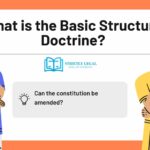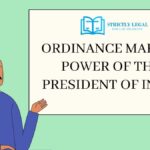Citation: [1980 AIR 1789, 1981 SCR (1) 206]
Petitioner(s): Minerva Mills Ltd and Ors.
Respondent: Union of India
Date of Judgment: 31/07/1980
Honorable Bench: Y.V. Chandrachud (then CJI), A.C. Gupta, N.L. Untwalia, P.S. Kailsam & P.N. Bhagawati JJ.
The Minerva Mills v. Union of India is one of the most remarkable cases as it guarded the “basic structure” of the Constitution of India from being amended by the Parliament. The Constitutional Validity of Sections 4 and 55 of the Amendment Act, 1986 gave “unlimited powers” to the Parliament to amend the Constitution and thereafter were knocked down by the Honorable Supreme Court.
Table of Contents
FACTS IN BRIEF
- The Minerva Mills Ltd. (hereinafter referred to as the petitioner no.1) is a limited company that transacts in textiles in the State of Karnataka. The other petitioners in the case are a shareholder of Minerva Mills ltd.
- The Government of India, in cognizance of the considerable fall in the production of Minerva Mills designated a committee on August 20, 1970 under Section 15 of the Industries (Development and Regulation) Act, 1951 (herein after referred to as the IDR act) to assemble an investigation of the eventuality of Minerva Mills.
- After the due submission of the report of the committee on October 19, 1971, the Government of India passed an order under Section 18A of the IDR Act and countenanced the National Textile Corporation Ltd. to take charge of the Minerva Mills’ management on the ground of “mismanagement” of the company affairs. Thereafter, this undertaking was taken in charge by the Government of India under the provisions of the Sick Textile Undertakings (Nationalization) Act, 1974 (herein after referred to as the Nationalization Act).
- After the Government of India gave the charge of the mills to National Textile Corporation Ltd., the same was questioned and appealed for by the Petitioners in the High Court of Karnataka. Nonetheless, the same was dismissed by the Honorable Court.
- Therefore, the petitioners, filed a writ petition approaching the Honorable Supreme Court of India under Article 32 of the Constitution of India, 1950.
- The writ petition challenged the constitutionality of the following sections:
- Sections 5(b), 19(3), 21 (read with 2nd schedule), 25 and 27 of the Sick Undertakings (Nationalization) Act, 1974 .
- Order of the Government of India dated October 19, 1971.
- Sections 4 and 55 of the Constitutions (Forty second Amendment) Act, 1976;
- Precedence given to the Directive Principles of State Policy over the Fundamental Rights.
ARGUMENTS ADVANCED ON BEHALF OF THE PETITIONER
The Learned Counsel for the petitioner, Mr. Nani Palkhiwala, firmly dedicated that specific sections of the Forty Second Amendment Act, 1976, most importantly Section 4 and 55 of the Act were infringing the Constitution of India as they straightaway ambushed the basic structure of the Constitution of India. It happened because of the addition of Clause (4) and clause (5) to Article 368 by Section 55 of the Forty Second Amendment Act, 1976 that the Parliament acquired the power to amend the Constitution of India and limit the powers of Judiciary for Judicial Review. Nonetheless, Article 31 C which safeguarded the Directive Principles of State Policy (DPSP) was also questioned in the Court of Law for rescinding the Fundamental Rights I.e., Article 14 and Article 19. The Leaned Counsel further argued that the Forty Second Amendment Act only made it feasible for the Directive Principles of State Policy to get the upper hand over the Fundamental Rights.
This act would eventually annihilate the basic structure of the Constitution of India that was specified by the Apex Court in Keshavananda Bharti’s case. Taking into consideration of the Learned Counsel for the petitioner, the Directive Principles of State Policy and the Fundamental Rights could go hand in hand or coexist without having to infringe or contravene or violate any of the provisions canonized in Part III or Part IV of the Constitution of India and the counsel also threw light on Justice, Liberty and Equality as clearly canonized in the Preamble.
ARGUMENTS ADVANCED ON BEHALF OF THE RESPONDENT
The Learned Attorney General tenaciously argued before the Court of Law regarding the significance of the State to take steps in encouraging welfare. The Learned Attorney General together with the Learned Solicitor General argued that Article 31 C must be read down. The Learned Attorney General resisted that the Laws or Statutes made on the strength of the Public were really far away from what is called as infringing, violating or destroying the basic structure of the Constitution of India. With regards to corroborate this argument, the Learned Attorney General threw light on especially Article 38 of the Constitution of India and thereafter added that a law in consent with Article 38 could not be termed as to infringement of Fundamental Rights or violating the basic structure, as it is a well known fact that the structure is focused on Justice, Social, Political and Economic principles and Article 38 sets forth upon the same.
DECISION OF THE APEX COURT IN THE CASE
The Honorable Apex Court convicted the clauses added to Article 368 of the Constitution of India. In the view of the Honorable Apex Court, they were unlawful and unconstitutional and endowed a unbounded amending power to the Parliament, which could be a clear cut ambush to the democracy. In the view of the Supreme Court, the Parliament must abstain from dilating its amending power to such an extent where anyway it would eventually violate or abrogate the Constitution of India or its basic structure. The court specifically convicted Claus 4 and Clause 5 of Article 368. Clause 4 interfered with the powers of the Parliament and Clause 5 restricted the the scope, hope and power of Judicial Review. These clauses called for proffering unlimited power to the Parliament, restricting the Judicial Review which if allowed may lead to misapplication of power which would eventually sabotage the basic structure of the Constitution of India.
In addition to that, the Supreme Court did not fail to detest Section 4 and Section 55 of the Fourty Second Amendment Act as both the provisions were declared to be constitutionally void by the Honorable Supreme Court, since they impelled a great threat to the basic structure of the Constitution of India. Nonetheless, the Apex Court put down dependency on the importance and perquisite of the Golden Triangle i.e Article 14, Article 19 and Article 21 and convicted Article 31 C as it swindled the two sides of this triangle.
CONCLUSION
The “Doctrine of the Basic Structure” was productively recapitulated in the case of Minerva Mills v. Union of India, 1860. This judgment helped in positioning a paradigm for cases in the future involving threat to the basic structure of the Constitution of India and anything as such. This judgment also helped in shielding any future attacks on the Fundamental Rights and helped in reuniting the Golden Triangle. This case has indeed tried to make a balance between the Directive Principles of the State Policy and the Fundamental Rights.

Law student.
Turning legal insights into engaging narratives.





